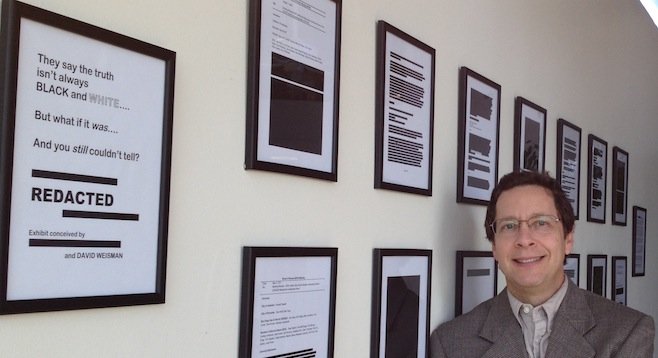 Facebook
Facebook
 X
X
 Instagram
Instagram
 TikTok
TikTok
 Youtube
Youtube

Although the San Onofre Nuclear Generating Station has produced its final megawatt of power, many battles between regulators, activists, and energy companies with ownership stakes in the plant remain to be fought. It remains to be decided, for example, who will pay for the premature failure of new $700-million-plus steam generators at the plant or who will foot the bill for decommissioning the two remaining reactors, which could cost billions. There's also the issue of how to handle tons of highly radioactive nuclear waste, much of it stored in unsealed pools of water.
The Alliance for Nuclear Responsibility is a watchdog group that's been following these and other nuclear-related issues at San Onofre and Diablo Canyon, California's last active nuclear-power plant, for years. The group consistently attends public hearings, submits commentary to regulators, and is frequently at odds with the utility industry.
Alliance staffer David Weisman has been involved in a struggle where plant operator Southern California Edison has suggested utility customers should pay for the failures at San Onofre and the California Public Utilities Commission says ratepayers deserve a refund based on what they've already paid. At the heart of this dispute is what the utility may have known about the generators before they were installed.
Edison doesn't seem to be forthcoming with the information. In a lighthearted attempt to make clear the difficulties the Alliance (appointed by the CPUC as a legal intervenor in the generator-replacement issue) has faced, Weisman has created an art installation entitled Redacted, which went on display this week at the Ocean Beach People's Organic Food Market.
"What was Edison trying to hide in their meetings about the failed steam generators at the San Onofre nuclear plant?" asks Weisman.
Quite a bit, it appears — the exhibit consists of over a dozen pages of documents detailing meetings between Edison and generator manufacturer Mitsubishi Heavy Industries, though black boxes form a virtual bar code over much of the text, over half of which is concealed. Edison has argued that the redacted information concerns proprietary information; critics have argued that it could prove a theory that Edison was aware that major design changes should have subjected the generators to federal review before their installation.
Weisman hopes the display and his other work as a documentarian and outreach coordinator for the Alliance will keep the public at large from forgetting that, while San Onofre is shut down, billions of dollars are still at stake.
"They say the truth isn't always black-and-white," wrote Weisman in an intro to the displayed pages, "but what if it was...and you still couldn't tell?"


Although the San Onofre Nuclear Generating Station has produced its final megawatt of power, many battles between regulators, activists, and energy companies with ownership stakes in the plant remain to be fought. It remains to be decided, for example, who will pay for the premature failure of new $700-million-plus steam generators at the plant or who will foot the bill for decommissioning the two remaining reactors, which could cost billions. There's also the issue of how to handle tons of highly radioactive nuclear waste, much of it stored in unsealed pools of water.
The Alliance for Nuclear Responsibility is a watchdog group that's been following these and other nuclear-related issues at San Onofre and Diablo Canyon, California's last active nuclear-power plant, for years. The group consistently attends public hearings, submits commentary to regulators, and is frequently at odds with the utility industry.
Alliance staffer David Weisman has been involved in a struggle where plant operator Southern California Edison has suggested utility customers should pay for the failures at San Onofre and the California Public Utilities Commission says ratepayers deserve a refund based on what they've already paid. At the heart of this dispute is what the utility may have known about the generators before they were installed.
Edison doesn't seem to be forthcoming with the information. In a lighthearted attempt to make clear the difficulties the Alliance (appointed by the CPUC as a legal intervenor in the generator-replacement issue) has faced, Weisman has created an art installation entitled Redacted, which went on display this week at the Ocean Beach People's Organic Food Market.
"What was Edison trying to hide in their meetings about the failed steam generators at the San Onofre nuclear plant?" asks Weisman.
Quite a bit, it appears — the exhibit consists of over a dozen pages of documents detailing meetings between Edison and generator manufacturer Mitsubishi Heavy Industries, though black boxes form a virtual bar code over much of the text, over half of which is concealed. Edison has argued that the redacted information concerns proprietary information; critics have argued that it could prove a theory that Edison was aware that major design changes should have subjected the generators to federal review before their installation.
Weisman hopes the display and his other work as a documentarian and outreach coordinator for the Alliance will keep the public at large from forgetting that, while San Onofre is shut down, billions of dollars are still at stake.
"They say the truth isn't always black-and-white," wrote Weisman in an intro to the displayed pages, "but what if it was...and you still couldn't tell?"
Comments